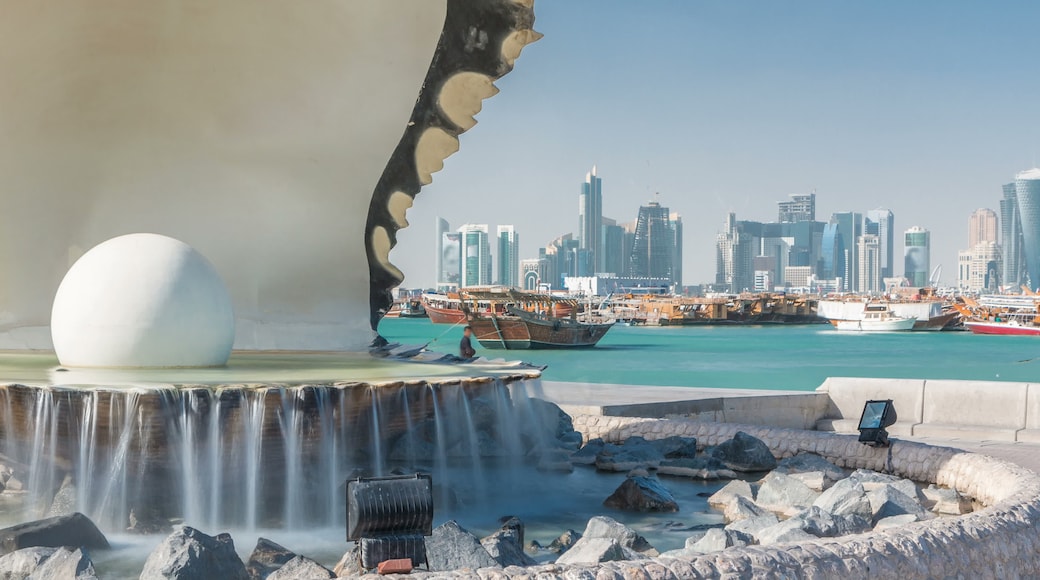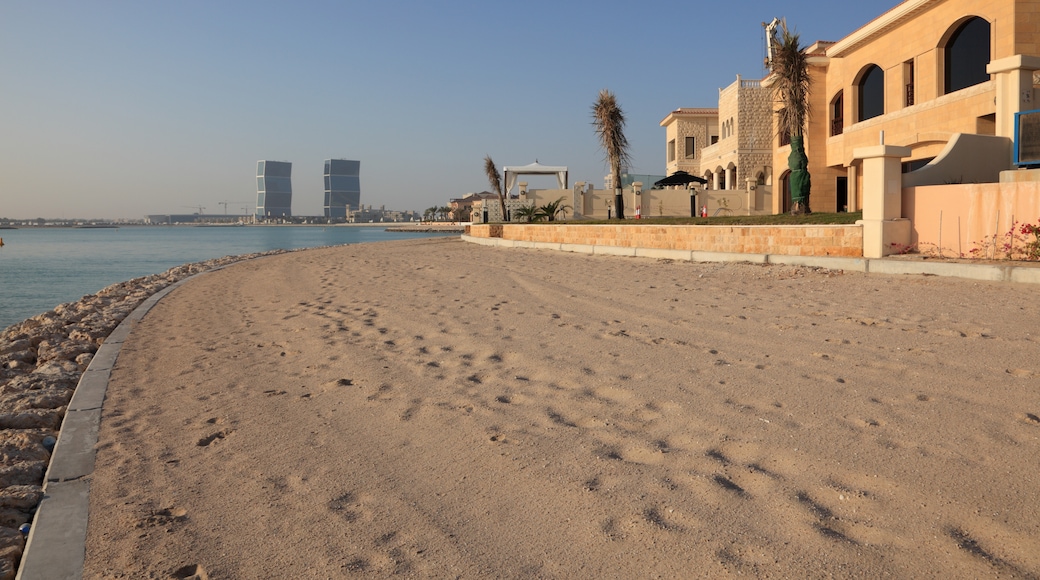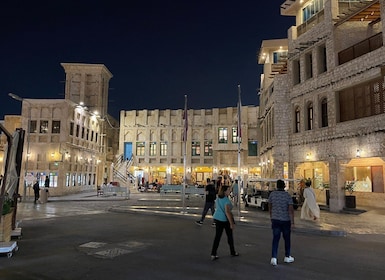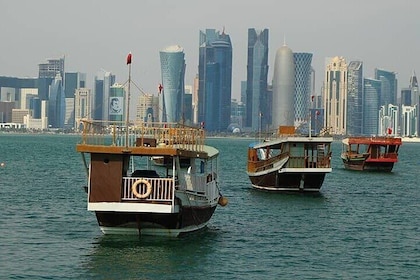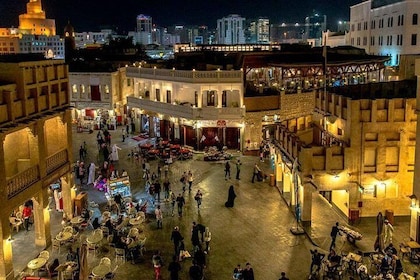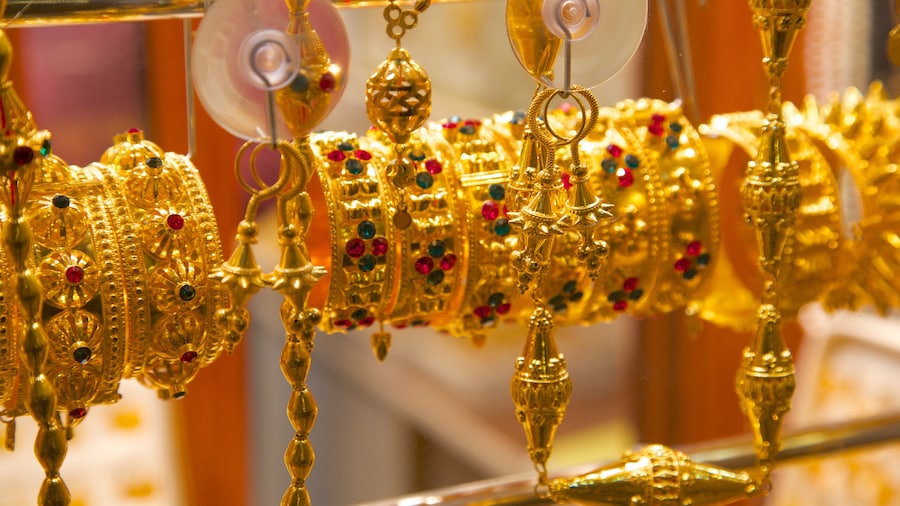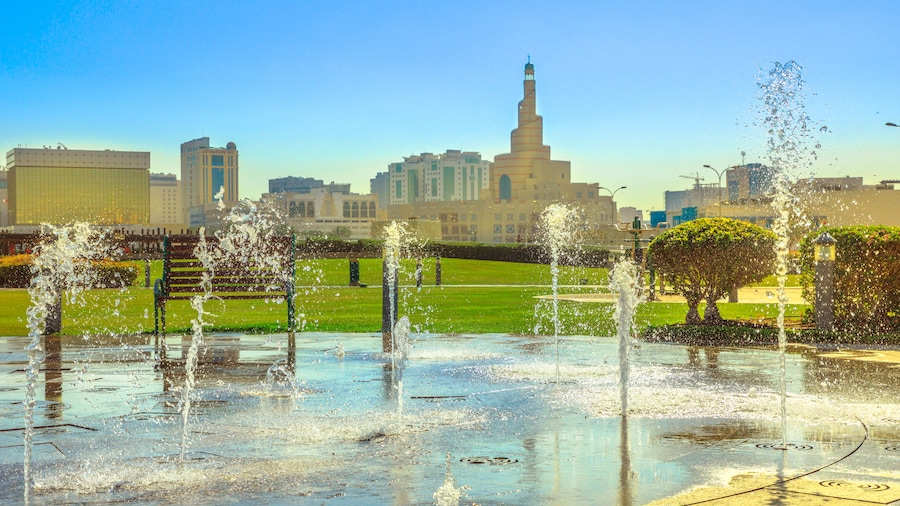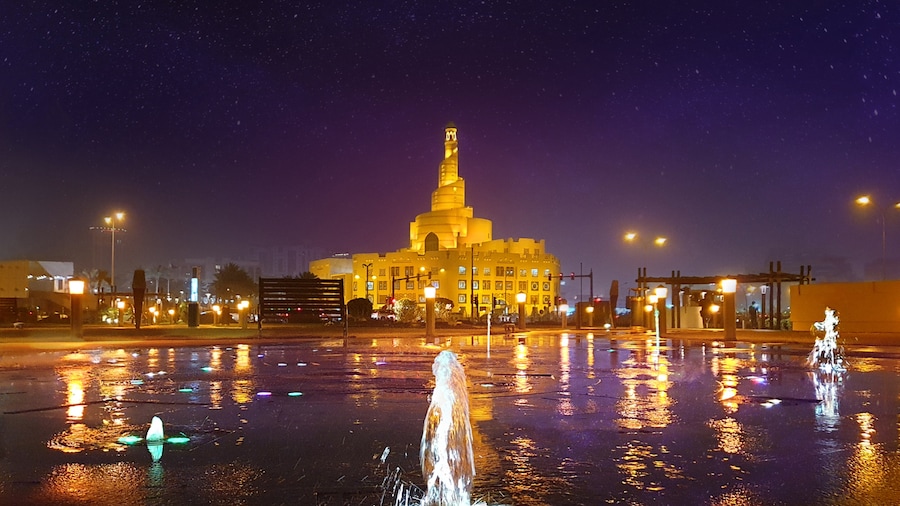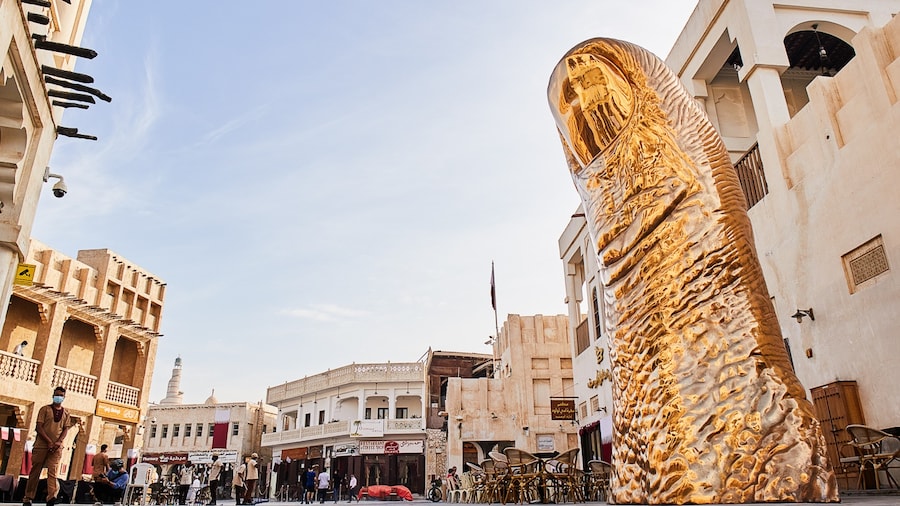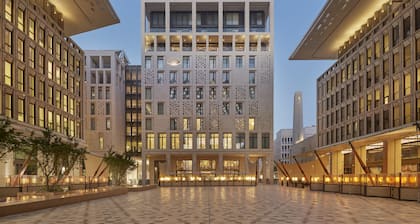As you walk eastward along the Corniche from Downtown Doha, you’ll reach the Pearl Monument, a very large symbol of Qatar’s past. A large open oyster has a gentle flow of water creating a falling water fountain from the lip of the lower shell. Most notably, a gleaming pearl rests in the center of the oyster. Visit the Pearl Monument during the day to photograph it as you pass by while seeing other major attractions in the area. Return at night when the pearl and its shell are brilliantly lit.
Learn about the history of pearl diving in the region. Even before the Qatar peninsula was settled, divers risked their lives to find these gems in the waters of the Persian Gulf. The process involved swimmers free diving up to 100 feet (30 meters) to harvest oysters from the bottom of the sea and then being pulled rapidly to the surface to dump their oysters before completing additional dives. Hundreds or thousands of oysters might have been required to find a single good pearl.
For more information and exhibits related to the pearl industry, continue another 1 mile (1.6 kilometers) east along the Corniche to the National Museum of Qatar. Shaped like a desert rose, this exceptional museum has displays of Qatar’s wildlife, nomadic people and transition to an oil-based economy in the late 1900s. Watch the film Nafas documenting the dangerous pearl-diving profession. Commissioned in 1865, the museum’s Pearl Carpet of Baroda is covered with more than 1.5 million seed pearls harvested by divers in the Persian Gulf.
Find the Pearl Monument in the heart of Doha. While standing at the monument, turn west to view the gleaming high-rises of Doha’s skyline. Head north to visit the Museum of Islamic Art. Head south to the Souq Waqif marketplace. Turn east to visit the Abdulla Bin Zaid Al Mahmoud Islamic Cultural Center for helpful introductions to local culture.
Travel by car to the monument from Hamad International Airport in around 15 minutes. Find parking in the underground lot below Souq Waqif Park.
